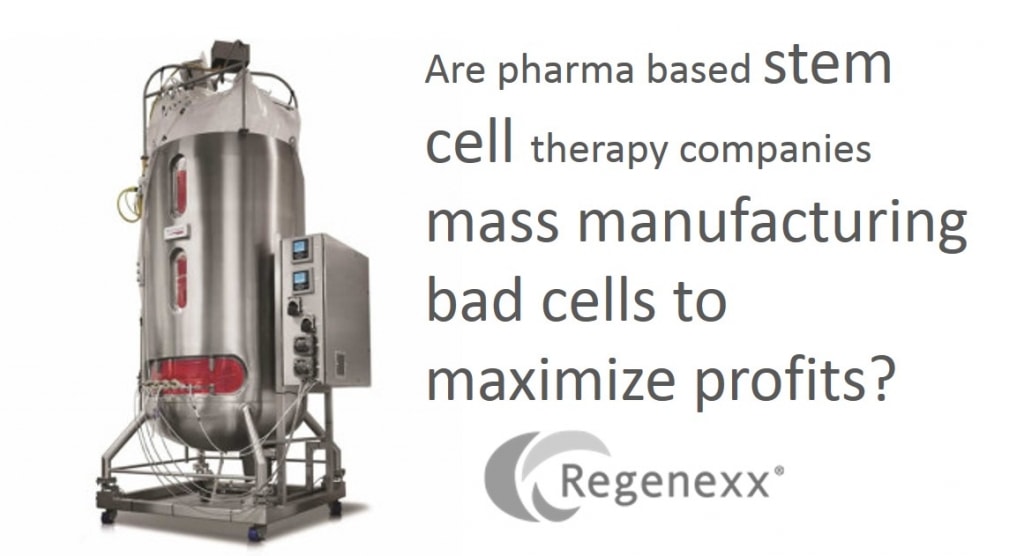Growing Mass Produced Cell Therapy Junk: Profit over Efficacy
Stem cells are about to become big business…the mass produced stem cell manufacturing business. The pharma based cell therapy industry that’s gearing up now for FDA approval of stem cells in a vial is quite different than the personalized medicine movement using the patient’s own stem cells. The issue is that your own stem cells, given the regulations imposed in the U.S., are far too expensive to use so mass producing donor cells is a better business plan. However, after nearly a decade of experience in using stem cells to treat patients with orthopedic problems, reading the “tea leaves” of murmurs from this nascent industry and how those signs will impact quality is disturbing.
Alexey Bresnev runs a great blog that often takes large amounts of lab or clinical data and digests this for readers. He recently reported on genetic abnormalities in cultured stem cells. He reports on two papers, one that suggested that the cut off for genetic instability should be 13% of cells and the other that found more than 50% of cells in cultured “lines” had genetic abnormalities.
What does this all mean and why should you care? When cells are grown in culture they must split, giving their copied genetic material to a new cell. If all goes well, each cell gets a nice clean exact copy of these chromosomes. As patient’s age or the cells are placed under stress, the cells can split unevenly and more or less genetic material can end up in one cell. This is called a genetic aberration or aneuploidy. It’s an overall indication of poor cell health. One way to create poor cell health is to place cells under stress by growing them too long.
I’ve blogged in the past that by every indication, pharma companies gearing up to mass produce stem cells are growing cells way too long. In fact, some of the claimed doses being grown from a single donor strain credibility. Now a second concerning issue is the amount of “bad cells” being suggested as being allowed in these cultures (aneuploidy). One research paper is suggesting that 13% may be the magic number (unsure why this is a reasonable number), another suggests 50%.
The upshot? The “cell health” metrics that we have always used in licensing our cultured stem cell procedure have much stricter quality controls (i.e growing cells for shorter time periods with far less genetic instability) than those we’re seeing and those being proposed for mass manufactured cells. My biggest concern is that some of the basic rules about cell potency in cell culture seem are likely being ignored. This could explain the lackluster clinical trials data from many of these companies.
The Regenexx cultured stem cell procedure is not approved by the USFDA for any indication and is only available through independently owned and operated sites where local regulations allow the use of autologous culture expanded cells.

If you have questions or comments about this blog post, please email us at [email protected]
NOTE: This blog post provides general information to help the reader better understand regenerative medicine, musculoskeletal health, and related subjects. All content provided in this blog, website, or any linked materials, including text, graphics, images, patient profiles, outcomes, and information, are not intended and should not be considered or used as a substitute for medical advice, diagnosis, or treatment. Please always consult with a professional and certified healthcare provider to discuss if a treatment is right for you.
